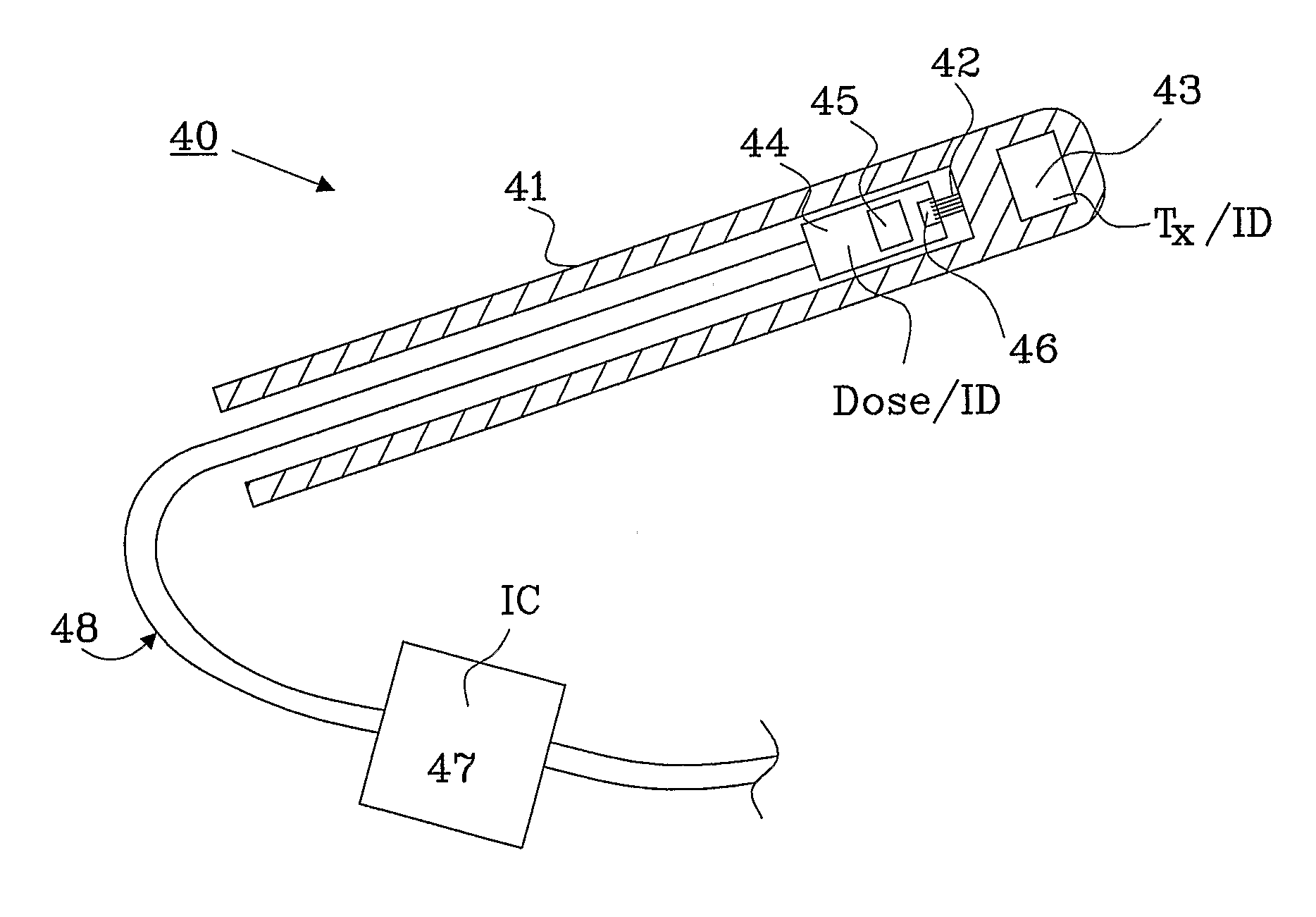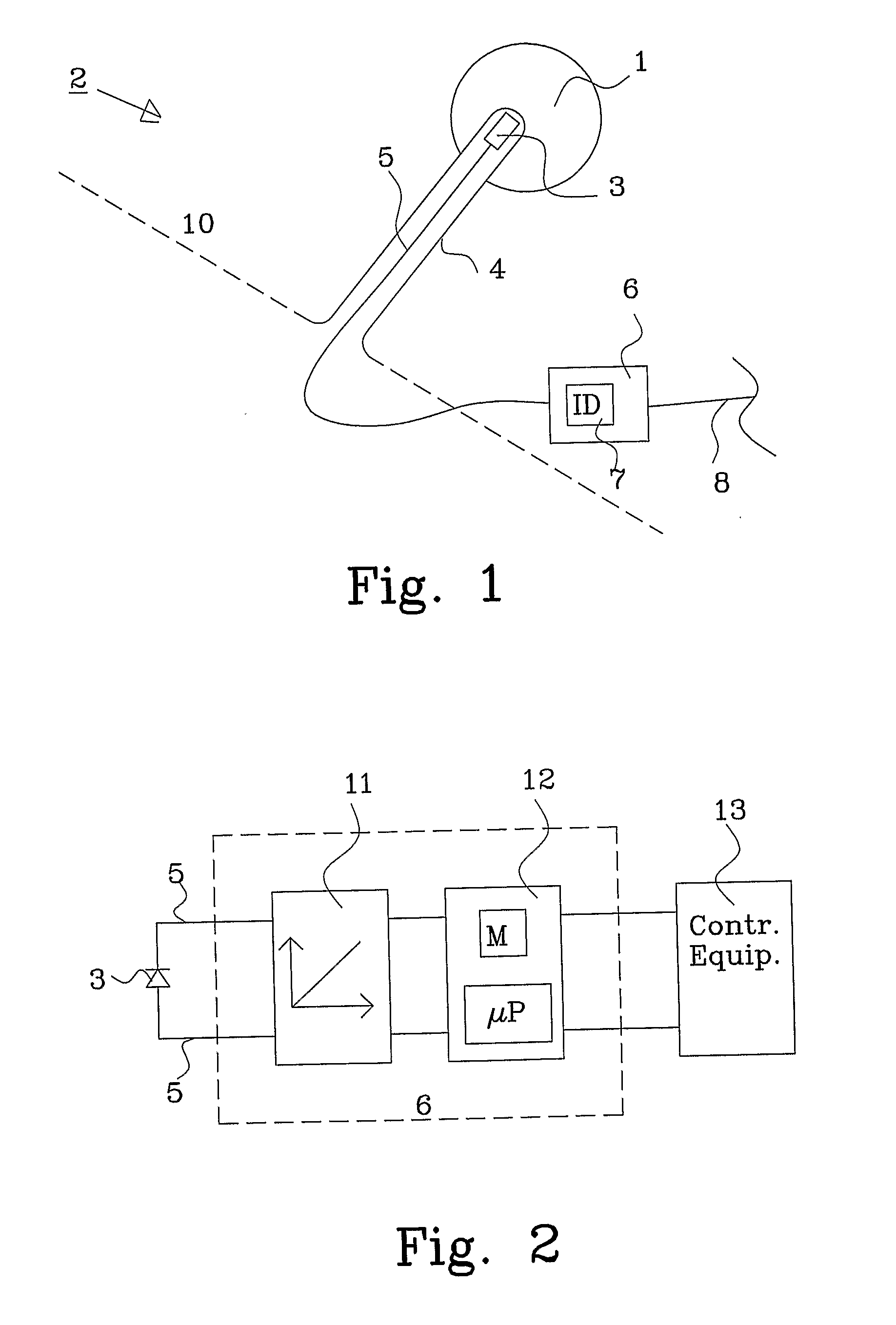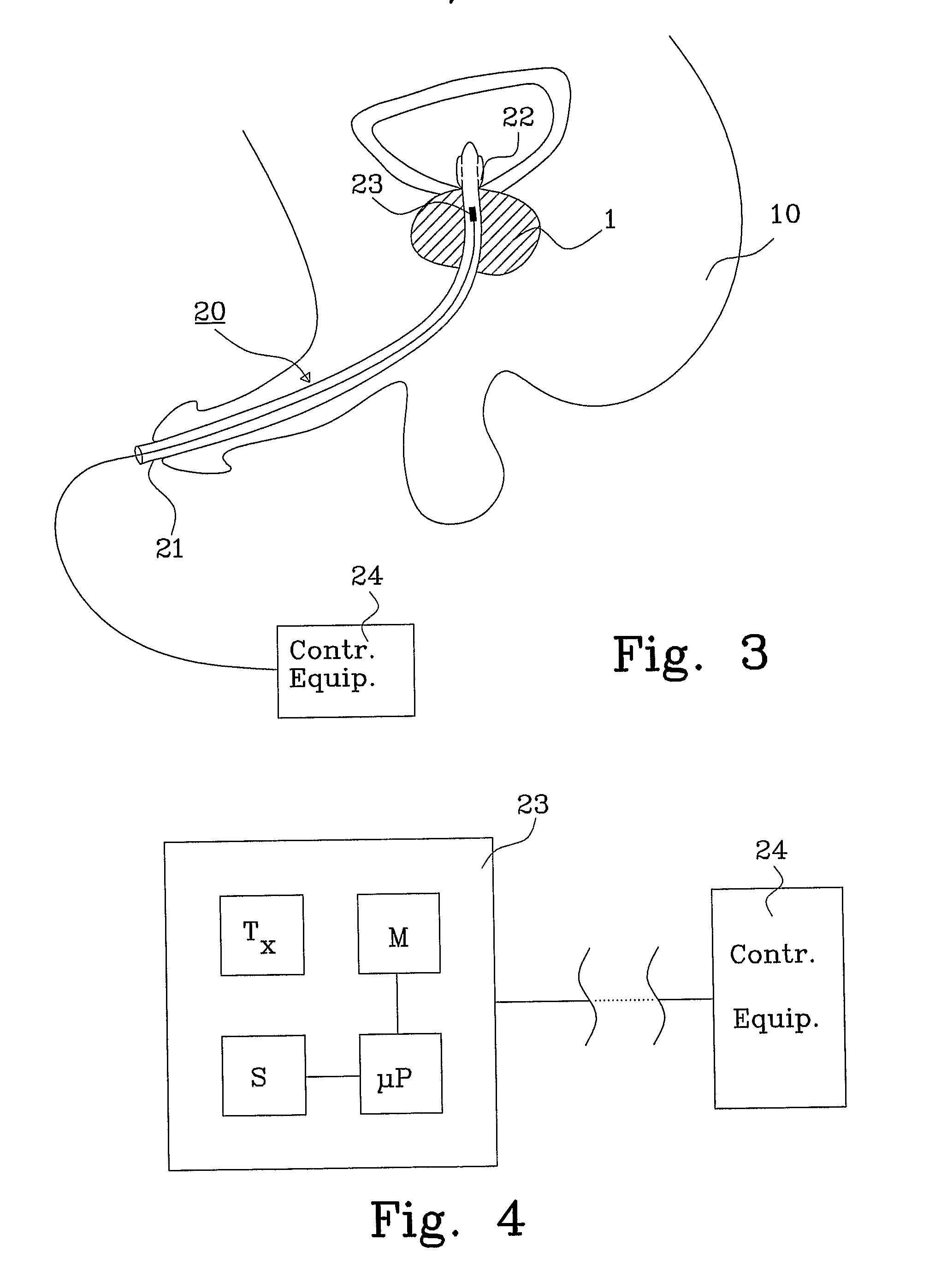Device for Measuring Administered Dose in a Target
a radiation monitoring device and target technology, applied in the field of radiation monitoring devices, can solve the problems of not being able to monitor the dose of radiation administered, not being able to remove the dosimeter from the patient, and not being able to control the amount of radiation the patient receives, so as to achieve the accurate radiation level in the target area
- Summary
- Abstract
- Description
- Claims
- Application Information
AI Technical Summary
Benefits of technology
Problems solved by technology
Method used
Image
Examples
first embodiment
[0025]FIG. 1 shows a schematic view of a radiation monitoring device 2, in this embodiment an implant, in a living body 10 of a patient. A bio-compatible cover 4, such as a catheter, is provided either through the tissue or through a natural opening in the body. The procedure of inserting the catheter is common knowledge of a skilled person in the art, e.g. Seldinger technique.
[0026]The catheter is inserted into, or near by, a target area 1, e.g. a cancer tumor. A dose sensor 3 is inserted into the catheter 4 and is connected through wires 5 to an externally arranged dose conversion unit 6. The dose conversion unit 6 is preferably provided with an electronic ID, or a written ID-label 7 (printed or hand written), and is described in more detail in FIG. 2.
[0027]The dose conversion unit 6 converts the signal from the dose sensor to an amount of administrated dose generated by the radiation source and is preferably fastened to the outside of the patient using an adhering material, such ...
second embodiment
[0033]FIG. 3 shows a cross-sectional view of a radiation monitoring device 20, in this embodiment an implant, in a living body 10. The catheter 21 is in this example introduced through a natural opening and will assist in determining the administered dose when treating for instance prostate cancer. An inflatable balloon 22, which is part of the catheter 21, helps to securely position the implant relative a target area 1. A dose conversion unit 23 is arranged within the catheter 21 within the target area 1. The catheter is removed after each treatment occasion by deflating the balloon and removing the implant 20. If the catheter is provided with a through going opening, such as a lumen, the bladder may be emptied even though the catheter is maintained in position.
[0034]FIG. 4 shows a block diagram of the second embodiment of a dose conversion unit 23 in the implant of FIG. 3, and comprises in this example a transmitter Tx used for determining the position of the target area 1 (and th...
third embodiment
[0046]FIG. 5 shows a cross-sectional view of a radiation monitoring device 30, in this embodiment an implant, comprising a catheter 31 provided with a mechanical guide 32 and a marker 33. The marker 33 is visible when the implant is subjected to x-ray radiation. The implant further comprises a combined dose and positioning unit 34 having a transmitter Tx used to determine the position of the target area in a patient, and a dose sensor 35 used to detect the amount of administered dose in the target area.
[0047]The combined dose and positioning unit 34 is provided with a guide element 36 that is arranged to be able to mate with the mechanical guide 32 and will ensure that the unit 34 is held in the correct position during radiation treatment. The combined dose and positioning unit 34 is connected to an externally arranged integrated circuit 37 through wires 38, and may also be withdrawn from the catheter 31 between the treatment occasions. The integrated circuit 37 includes the functio...
PUM
 Login to View More
Login to View More Abstract
Description
Claims
Application Information
 Login to View More
Login to View More - R&D
- Intellectual Property
- Life Sciences
- Materials
- Tech Scout
- Unparalleled Data Quality
- Higher Quality Content
- 60% Fewer Hallucinations
Browse by: Latest US Patents, China's latest patents, Technical Efficacy Thesaurus, Application Domain, Technology Topic, Popular Technical Reports.
© 2025 PatSnap. All rights reserved.Legal|Privacy policy|Modern Slavery Act Transparency Statement|Sitemap|About US| Contact US: help@patsnap.com



